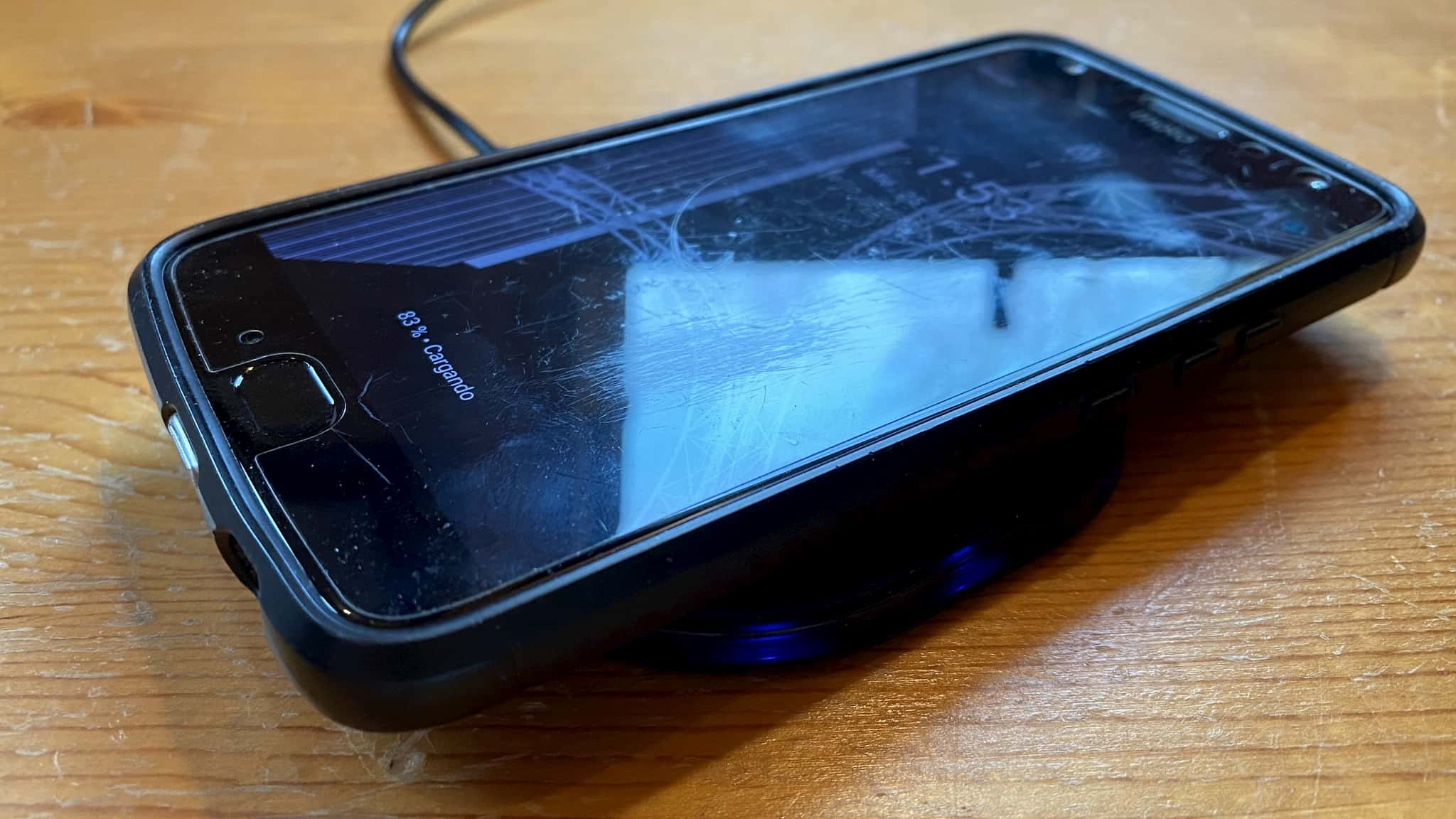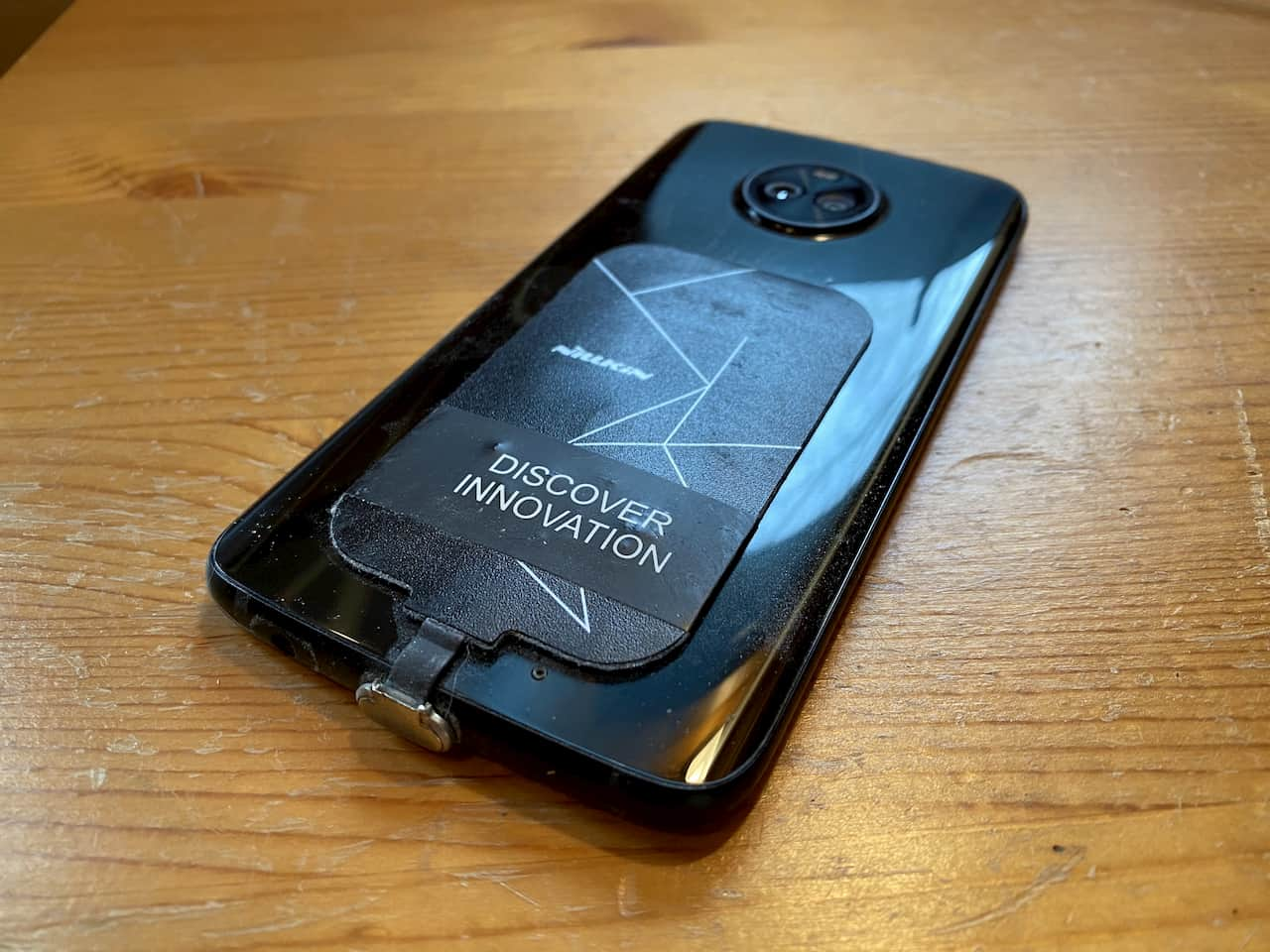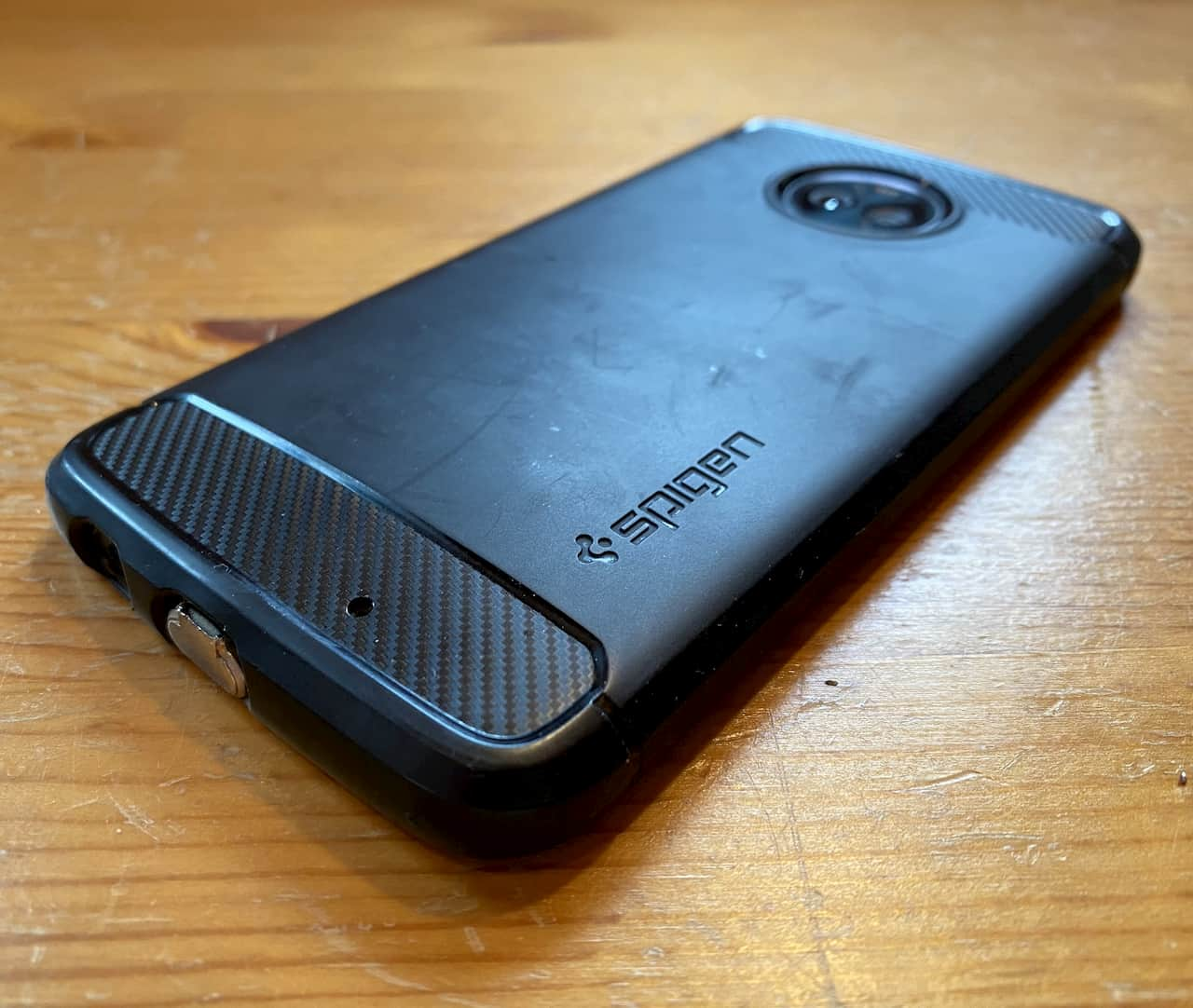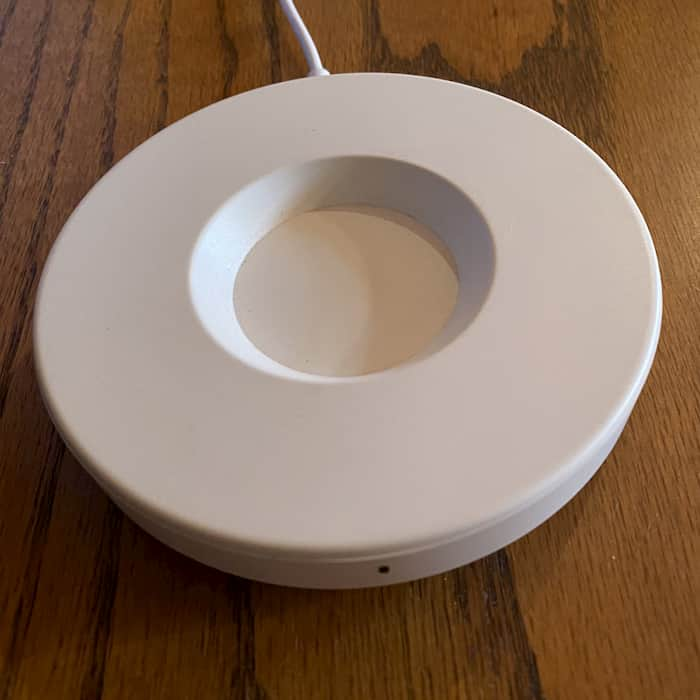
You should try wireless charging
Wireless charging has been around for a while now but it’s still not ubiquitous. Many people don’t know their phone supports the feature. While it’s not perfect, I think this is an under-utilized feature of modern cell phones.
How does it work?
Wireless phone chargers uses what is call “Inductive charging”. An alternating current flowing through a cord induces a small magnetic field. Multiple loops of the wire amplify the effect. Another coil of wire can reverse this affect by converting a magnetic field into an electrical current. This technology is used in electric toothbrushes as well as electric cars.

The Qi wireless charging standard (pronounced CHEE) is the industry standard that allows phones from different manufacturers to work on the same chargers. It’s now a mature technology that is integrated into more and more devices. In the past few years, the standard has increased the amount of power supported from 5 Watts, to 7.5W to 10W, allowing faster and faster charging times. Some phones even support "reverse wireless charging’ where the phone can share some of its battery power with another phone.
But there are limitations to how far and efficiently you can use this effect. For Qi chargers, the two coils usually have to be withing about a half-inch apart. The centers of the coils also need to lined up so the magnetic fields line up. Magnetic metals will also interfere with charging.
Pros:
So what’s cool about this tech? It’s wireless! No really, your phone charges without being plugged in. This is a surprisingly nice user experience and goes beyond the initial wow factor. So let’s break down what works well.
You can charge when convenient
My favorite part of wireless charging is that starting and stopping charging is as simple as putting down or picking up your phone. If you are sitting at your desk to work, you can drop your phone on the pad so it’s charged whenever you get up. If you are texting, you can grab your phone from the charger and walk away without having to unplug or be tied to an outlet.
This means it’s easier to charge during the day. I have a charger by the bedside and one at my desk. My phone rarely falls below 25% battery. Since the charging base rests on table tops, there’s no need to fish a charging cable out from behind a desk or nightstand. It’s always there ready to charge when you need it.
It’s built into many phones (Android and Apple)
Apple is still holding onto its proprietary lightning connector for iPhones even though most Android have moved to USB-C. However they have included wireless chargers in their devices the last few years as have most major manufacturers.
- All iPhones from 8 and above
- Pixel phones from 3 on (excluding the budget 4a/5a)
- Most Samsung Galaxy devices starting at the S6
- Apple’s AirPods Pro charging case
If you have a phone that supports it, the only thing you need to get started is a charging pad. Thanks to the Qi standard, you can buy from a phone manufacturer or a third-party seller and it’ll work with current and future generations of phones. Qi chargers are being built into more devices like Tesla Cars and restaurant tables. Unfortunately, wireless charging isn’t standard in many budget phones, but you still have the option of adding an external wireless receiver (see below).
Your port won’t wear out as quickly
This is one of the original reasons that decided I wanted to have wireless charging with my newest phone. I had gotten tired of my old micro-USB port not working when I would try to charge at night. Because you aren’t moving, pulling, or pushing a cable when you charge, there is a lot less wear and tear on your phone and cables with wireless charging.
You’ll be more protected from electrical surges
When traveling internationally, this was a nice added benefit. I don’t want to overstate the protection wireless charging brings, so you should still use a surge protector if your electricity is unstable. But the lack of a physical connection and the addition of a charging pad adds a later of protection to your phone.
Bonus: You can charge so your battery lasts longer
If you can manage keeping your battery between 20-80% you can use wireless chargers to extend the life of your battery! (yes it’s a little ridiculous but it’s on YouTube and it’s probably true)
Cons:
As keen as I am on this technology, it’s important to note that this technology isn’t perfect. Some of the below reasons may make wireless charging impractical for your phone, but many of them have workarounds. It’s also key to remember that you can still use your phone’s charging cable when it makes sense.
Gotta’ line it up right
No one wants to wake up in the morning and realize their phone didn’t charge, or worse, their alarm didn’t go off because their phone died. If your phone is knocked off the charging pad or you didn’t align it quite right you could wake up to find it didn’t charge. A vertical charger (where the phone is propped up) can be easier since it has a base to line up. Most wireless chargers have an indicator light that can warn you if you’re not charging, but you’ll have to look at that or your phone’s charging indicator.
Just like you can forget to plug in your phone to the charger, wireless charging does still require you to put it on the charger. But a good wireless charging pad will help you avoid the chance you though you were charging but you weren’t aligned right. Better chargers have a bigger range and will allow a little flexibility in placement. I recommend checking the reviews to see if people have had issues and to know how clear the “not charging” indicator is.
It doesn’t work with some cases and accessories
Wireless charging requires the phone be close to the pad without interference. This means that anything attached to the back could prevent wireless charging from working. This could include magnetic mounts, credit card holders, finger grips, or even a thick case. If you really like an accessory like a magnetic mount or grip, there are often options that are wireless charging friendly, so consider that when looking at accessories.
Sometimes a cord is better
If you’re down to your last 2% while on a video call and can’t put your phone down, a wireless charger isn’t your best option. Wireless charging requires you put your phone down somewhere stable,If you like to lie in bed at the end of the day and charge your phone to get through an hour of phone time, you’ll want a cord. so if you are on the go with a battery pack or in a friend’s car it’s probably not the best option.
Using a wireless charger doesn’t prevent you from using a cord. It’s an add-on technology that you can use when convenient. If your phone doesn’t have wireless charging built-in and add an external receiver (like me) it can be inconvenient to remove the receiver, but it’s always an option if you need.
Charging is less efficient (and slower)
I hesitate to say this because it’s never been a problem for me. Wireless chargers are slower than an equivalent corded charger due to the energy wasted in induction. I charge my phone periodically throughout the day so I typically don’t care about speed. If speed is important to you, 7.5 Watt or 10 Watt quick charging is available for most phones with a supporting charger and power adapter. If you’re battery is low and you need the fastest charge or are charging from a batter pack, use a cord. Otherwise, efficiency and speed shouldn’t be a problem. Much of the wasted energy may be transformed to heat, but must chargers don’t get too hot in normal conditions.
It usually doesn’t come in the box
If you want wireless charging, you’ll have to buy a wireless charging pad separately. Many wireless chargers don’t include the power adapter either. So if you buy a “quick charging” wireless charger, be prepared to shell out a little more money for a quick charging power adapter to plug it into.
Hardware
There are a lot of wireless chargers for sale, but a cheap charger without much range can leave you with headaches when you phone doesn’t charge right. So look for well-established brands that have a reputation to protect. The pickiest charger I have is a no-name amazon charger.
Two wireless chargers I can recommend personally:
Adding wireless charging to a phone without

After having a flaky micro-USB port on my old phone, I decided that wireless charging was a must-have feature for me. The low-end phone I wanted to buy didn’t have wireless charging built-in, so I decided to buy an external wireless receiver. These are slim, oval or rectangular shaped devices with a charging cord coming out. The USB-C receiver I bought easily fits between my phone and the silicone case.
If you are considering this option, choose one that matches your charging connector and that has the appropriate length cord for your device’s size. You can usually find one for less than $20. The major downside of an external wireless receiver is that it takes up your charging port so you will need to unplug the receiver to use the port. With a case, this is inconvenient and makes me avoid using portable chargers.

Wireless charging with a pop-socket

My wife loves having a pop-socket on her phone to avoid dropping it. Pop-sockets can be flattened but are still too tall for wireless charging to work properly. The newest pop-sockets are removable, which allows you to use a wireless charger. However, removing a tab to charge wirelessly takes a way a lot of the convenience of wireless charging.
Pop-socket sells a solution to the problem they created! A special charger with a cutout for a pop-socket. This actually fixes the alignment issue with wireless charging by making sure your phone is always centered on the wireless charger. This does require that your pop-socket be mounted in line with your phone’s internal wireless receiver, but it’s actually an improvement. Their charger is a bit more expensive than some others but it comes with a power adapter.
Wireless charging car mounts
I have a wireless charging car mount which starts charging my phone whenever I have it in the dock. It’s handy as both a mount and a charger. They are a little more expensive than a normal charger, but make charging a phone on trips as simple as possible. Since cars have wider temperature changes, I have had some issues with the charger getting hot. This is normal for a wireless charger, but if it is cold out, you don’t want your heat blowing on the charger and if it is sunny, make sure the charger is getting cool air.
There is a lot to consider with wireless charging, but it is something I hope gains wider adoption. The convenience is hard to convey. So if your phone supports it, you should try wireless charging. Try a charger before you buy and make sure it works with your case. Then consider putting it on your Christmas list.
Responses
See how to respond...
Respond via email
If you'd prefer to message me directly, send an email. If you'd also like your message to be visible on the site I can add it as a comment.
Reply via Email
Respond from another site
Responses are collected from posts on other sites. Have you posted somewhere that links to this page? If so, share the link!